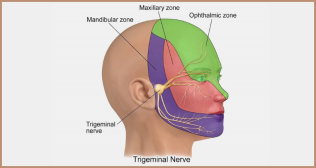
What Are Opioid Medications?
Opioids are a class of strong pain medications that are commonly prescribed for the management of severe pain like cancer and post-surgical pain. They work by interacting with the body's opioid receptors, which are found in the brain, spinal cord, and other areas. These medications can be highly effective in treating both acute and chronic pain, but it's crucial to have accurate information about them.
Types of Opioids
There are primarily three categories of opioids based on their origin:
- Natural Opioids: Derived from the opium (poppy) plant. E.g. morphine and codeine.
- Semi-Synthetic Opioids: Modified versions of natural opioids. E.g. oxycodone and hydrocodone.
- Synthetic Opioids: Man-made. E.g. fentanyl and methadone.
What Are Opioids Used for?
Opioids are often prescribed for:
- Post-surgical pain: Severe pain resulting due to operative procedures.
- Palliative care: In end-of-life care, opioids can help alleviate severe pain.
- Breathlessness: At times, opioids may be employed to alleviate shortness of breath and enhance comfort (along with other measures directed towards the cause of breathlessness), when sufficient conservative treatments have been administered but failed.
- Chronic pain conditions: Conditions like arthritis, cancer, or back pain may require long-term pain management.
Benefits of Opioid Medications
When used appropriately, opioids can provide significant pain relief, improving quality of life for many individuals. They can be particularly effective in managing severe pain that doesn’t respond to other treatments.
They are not likely to harm your vital organs like liver or kidney, if taken under expert supervision.
Common Side Effects and Management Strategies
Constipation:
Management: Constipation is a frequent side effect of morphine. To prevent or manage it, patients should increase their intake of dietary fibre, drink plenty of water, and engage in regular physical activity. Doctors may also prescribe laxatives or stool softeners.
Nausea and Vomiting:
Management: These symptoms often occur at the beginning of treatment and usually subside within a week. Anti-nausea medications (antiemetics) can help manage these symptoms. Eating small, frequent meals and avoiding rich or spicy foods can also be beneficial.
Drowsiness and Sedation:
Management: Drowsiness is common when starting morphine or increasing the dose. This usually improves as the body adjusts to the medication. If sedation persists, the doctor may adjust the dosage or timing of the medication. Avoiding alcohol and other sedatives can also help reduce drowsiness.
Itching:
Management: While keeping the skin moist and hydrated helps, your doctor may change your medicine or dose of the opioid or prescribe you with certain medications to help you with itching.
Dizziness and Light-headedness:
Management: To reduce dizziness, patients should rise slowly from sitting or lying positions. Staying hydrated and avoiding sudden movements can also help.
Respiratory Problem
Management: This is a rare side effect when opioids are used as prescribed. Patients should be monitored closely, especially when starting treatment or increasing the dose. If respiratory depression occurs, immediate medical attention is required.
Here are some key points about their use: -
- Common opioids available in India are tramadol, tapentadol, codeine, morphine, buprenorphine, fentanyl and methadone. These medications work by binding to opioid receptors in the brain and spinal cord to block pain signals.
- Immediate vs. Extended Release: Opioids can be formulated as immediate-release (IR) for quick pain relief or extended-release (ER) for long-lasting pain control. Often, a combination of both types is used to manage chronic and breakthrough pain effectively.
Administration Methods: Opioids can be administered in various forms, including oral tablets, patches & injections. The method of administration is chosen based on the patient’s needs and the severity of the pain.
Responsible opioid prescription and consumption: It is the responsibility of both prescriber and the patient to take these medications responsibly so as to mitigate the risks and side effects. While opioids are effective, they come with risks such as dependence, tolerance, and potential for misuse. Healthcare providers must monitor patients closely and adjust dosages as needed to manage these risks.
Responsible Use of Opioids
If you or someone you know is prescribed opioids, it’s essential to use them responsibly:
- Follow Prescriptions: Always take opioids exactly as prescribed by your healthcare professional.
- Communicate: Keep an open dialogue with your doctor about your pain levels and any side effects.
- Avoid Mixing: Do not mix opioids with alcohol or other sedatives, as this increases the risk of overdose.
- Secure Storage: Store medications securely and out of reach of children to prevent accidental ingestion.
The Opioid Crisis
In recent years, the misuse of opioid medications has become a significant public health crisis. Overprescribing, coupled with the availability of illicit opioids, has led to a dramatic increase in addiction and overdose deaths. Awareness of this crisis has prompted changes in prescribing practices and a push for more comprehensive pain management strategies.
Conclusion
Opioid medications can play a vital role in pain management (especially cancer pain management) when used judiciously. Understanding the benefits and risks is essential for anyone prescribed these drugs. Open communication with healthcare providers, responsible use, and exploration of alternative pain management strategies can help individuals navigate the complexities of pain relief while minimizing risks. If you have concerns about opioid use, don’t hesitate to reach out to a healthcare professional for guidance.
Categories
Clear allMeet the doctor

- Palliative Medicine | Palliative Medicine
- Support Specialties | Pain Management
- Pain and Palliative Medicine | Pain and Palliative Medicine
-
11 Years
-
1800
















